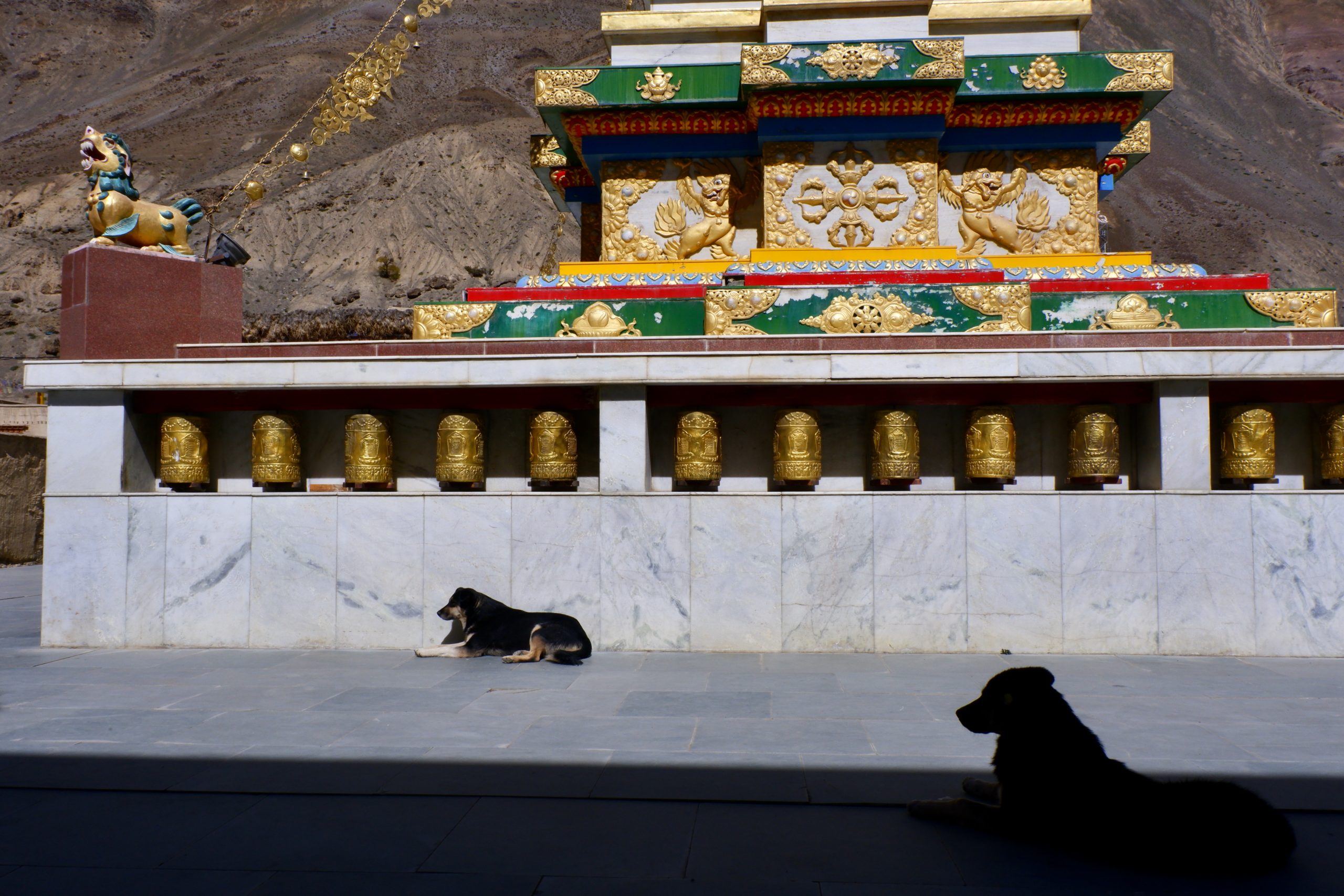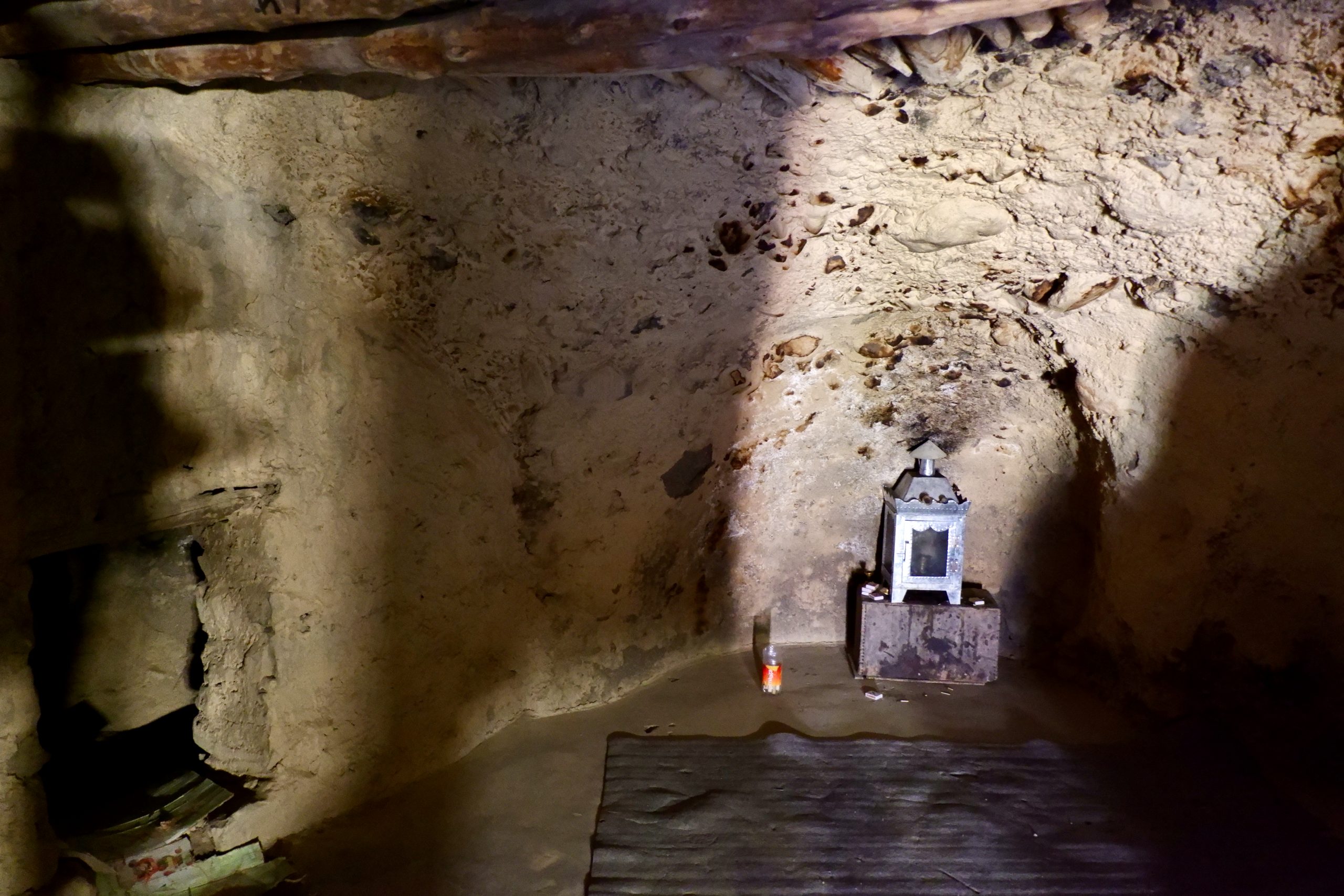Tabo – Marriage, Bus and Buddhism
19. + 20. October 2023

The day after I returned I was exhausted. I would have liked to have my laundry done, but there was no one to offer this servicen. But I also met Lara, the owner of the first homestay. He took me to a wedding. Unfortunately, the big events weren’t supposed to take place until later in the evening and I was actually too tired for that. But I got lunch and unfortunately couldn’t see the bride and groom. Here too it was an arranged marriage. I also saw how people give gifts to the wedding – usually money. A gentleman has written everything down, so you know what you have to give back when the givers have something to celebrate.
 noting down the gifts
noting down the gifts
 lunch
lunch
I planned to take the bus to Taboo the next morning. He should leave at 7:30 and I should be there from 7:00. I was on time, a gentleman sold me a ticket – and then I had to wait. The bus isn’t supposed to start until 7:45. At some point the driver could be seen peeling himself out of his sleeping bag on the bus. All around me were migrant workers from southern places, all of whom were driving home after finishing their work, looking happy, taking photos of themselves and loading their bundles onto the roof. I started talking to a local and he immediately told me that he was the first Indian to be on six 8,000-meter peaks. That was during his time in the army, he is now retired but still works in a type of mountain rescue service that also deals with avalanches. Then an attempt was made to get the bus to start. It wasn’t that easy and some gentlemen tampered with the engine and tinkered around with it. At some point there was an engine noise and a lot of smoke. It’s all a problem of cold. And around 8:00 we rocked off – only to drive around the corner where the driver and conductor were drinking tea and something more items were loaded. But then we rumbled off the 40 km and I arrived in Taboo around 10:30.
 Busfume
Busfume
Tabo is a place clustered around the 1,000-year-old Tabo Monastery. Beautiful apples grow here at 3,200 m. There are some accommodations and restaurants, but much was closed. There were not so many tourists either, a few from India. I stayed with a Nepalese family who split their time here and at home.
 apples
apples
I was here with my father in 2004, but I don’t remember much about it. To me, the monastery grounds seemed renovated (at least from the outside) and there were various fancy new Buddhist buildings like this stupa.
 Stupa
Stupa
 Stupadogs
Stupadogs
The monastery is considered a huge treasure of Buddhist history and very sacred. It also dates from the time of Lotsava Rinchen Zangpo. Twice the Kalachakra ceremony was held here by the Dalai Lama. Inside the monastery, photography is strictly forbidden, but outside you are allowed. And I was very fascinated by it, because the clay construction reminded me more of southern deserts than of Himalayan mountain deserts.
 1
1
 2
2
 3
3
 4
4
 5
5
 6
6
 7
7
On the mountainside on one side are some natural caves/shelters. Monks used to retreat there. Now no one does that any more, but you can look at it. It is a bit higher up and so you have a good view of the place with the monastery complex in the middle.
 Tabo
Tabo
 monasterycomplex
monasterycomplex
 building next to caves
building next to caves
 caves outside
caves outside
 caves inside 1
caves inside 1
 caves inside 2
caves inside 2
 caves inside 3
caves inside 3
That was it for Tabo. It’s funny in a place that looks like it should be vibrating with visitors – and then there’s hardly anyone there. I was the only guest again. The next day, I would finally drive the piece of road that was still missing on my Spiti round. I was very excited.
